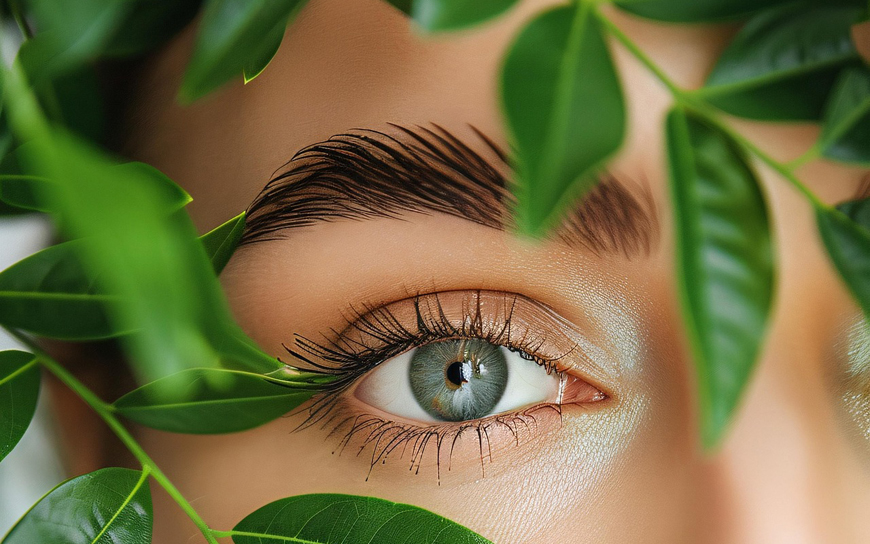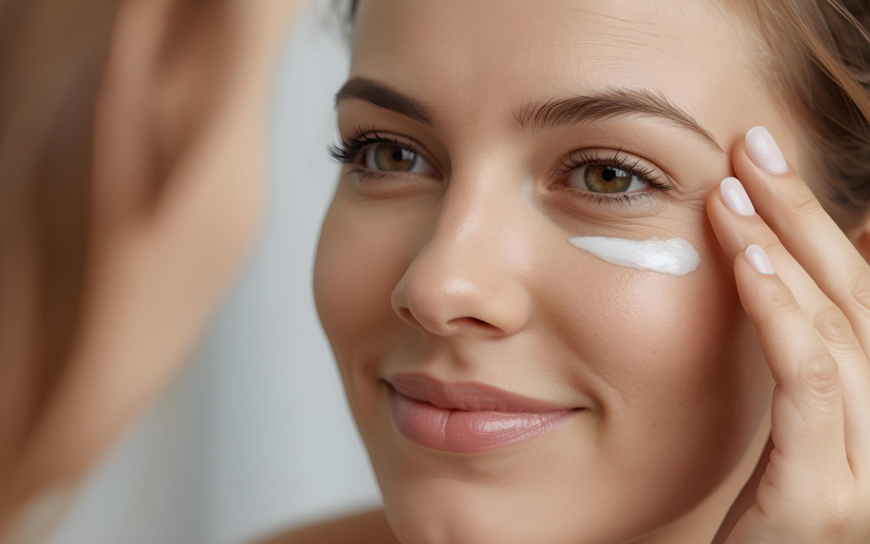
Every skin has different characteristics and different needs. If you want to know your skin type, you first need to understand the differences between the various skin types. In cosmetology, there are three factors that determine a skin type: the production of sebum, the hydration of the skin and its sensitivity. According to these factors, there are 5 skin types: normal, dry, oily, combination and sensitive.
Why is it important to know my skin type?
Knowing your skin type, will help you choose the right skin care products and avoid irritants that may harm your skin. This way you will keep your skin healthy and well protected.
What are the 5 basic skin types?

Normal skin
Normal skin is neither dry nor oily. It looks and feels healthy because it is well hydrated. The sebum produced is enough to keep the skin protected but at the same time it is not that much as to cause oiliness. The skin’s pores are quite small and not particularly visible. There are only few or no imperfections, the skin’s texture is smooth and soft, and the tone is even. Breakouts are rare and so are various irritations like redness and itchiness. Normal skin is generally very resistant and rarely suffers from allergies. It doesn’t react negatively to new skin care products and is not seriously affected by harsh weather conditions. It does not need special care and you can keep it healthy and good looking by following a simple 3-step beauty routine: cleanser-moisturizer-sunscreen.
Normal skin characteristics
No or few blemishes
Small pores
Resistant
Rare irritations and breakouts
Dry skin
Dry skin is caused by the lack of oil or can be the result of various external factors like weather conditions, indoor heating, hot showers, unprotected sun exposure, et.al. The skin’s pores are usually not visible and the texture is rough. Dry skin can become itchy and irritated and in some cases it peels and cracks, so it is more exposed to bacteria and prone to infections. Fine lines and wrinkles are more visible, the skin is less elastic, and the complexion looks dull and ashy. People with dry skin should use extra moisturizing skin care products and avoid harsh ingredients that may dehydrate their skin and remove its natural oils.
If you want to learn how to care for dry skin, read this article from our blog:
How to Treat Dry and Dehydrated Skin
Dry skin characteristics
Pores are usually not visible
Skin feels tight and rough
Prone to infections
Visible lines and lack of elasticity
Oily skin
Oily skin is the result of excess sebum production. Oily skin feels greasy and usually looks shiny. Teenagers and young people tend to have oily skin, as it is usually determined by hormonal causes. The pores are enlarged and tend to clog. This usually leads to inflammations and breakouts. Oily skin is usually prone to acne and the texture has a lot of blemishes like pimples and blackheads. There are less fine lines and wrinkles and the skin is more elastic. Makeup won’t stay on oily skin and doesn’t last long. People with oily skin should avoid using heavy care products like some vegetal oils, and thoroughly cleanse their skin, as excess sebum, when combined with sweat, pollutants and make up, tends to clog the pores leading to breakouts.
Oily skin characteristics
Feels greasy and looks shiny
Enlarged pores and a lot of blemishes
Prone to acne
Less visible lines and wrinkles
Combination skin
Combination skin has characteristics from the skin types mentioned before. Some areas of the face may be oilier and some others are drier. It is a skin type that changes a lot throughout the year and is affected by the weather conditions and temperatures. Combination skin is oilier during the summer and drier during wintertime. People with combination skin usually notice that the T zone (forehead, nose, and chin) is oilier, whilst the cheeks feel normal or more rough and dry. In other cases, combination skin may be dehydrated and prone to acne at the same time. Pores in T zone are usually enlarged and in the rest of the face small and not very visible. This skin type needs special care with the use of different products on different areas.
Combination skin characteristics
Combines characteristics from the other skin types
Different textures in different areas
Changes throughout the year
Needs special care with the use of different products
Sensitive skin
Sensitive skin has not to do with sebum production as people with oily skin or dry skin, can experience skin sensitivities. Sensitive skin can be caused by genetics, external factors and various allergies. It is often accompanied with various dermatological problems such as eczema and rosacea. People with sensitive skin usually experience itchiness, redness, and burning with breakouts and pimples often appearing. The skin may peel or crack, has frequent rashes, and is prone to negative reactions. Irritations can be easily triggered by ingredients, fabrics and other materials. People with sensitive skin should avoid using skin care products with fragrance, alcohol or harsh, active ingredients like retinol that may harm their skin and trigger irritations or allergies and opt for mild formulations with anti-inflammatory and calming properties.
Sensitive skin characteristics
Fragile and prone to irritations
Accompanied or caused by dermatological skin conditions
Frequent negative reactions and allergies to new products
Needs special and careful treatment
How will I identify my skin type?

To determine your skin type, follow these steps: Use a gentle cleanser to wash your face and then pat dry with a soft, cotton towel. Do not apply any product and wait for 30 minutes. Start observing your skin and how it reacts.
If you notice that your skin feels greasy or is shiny, then it is oily. If the greasiness appears in the T zone, then you probably have combination skin. If your skin feels tight and rough, then you have dry skin. If you notice a negative reaction or experience some irritations, then your skin is sensitive. If your skin feels soft, hydrated and clean, then most probably it is normal.
Can my skin type change?

Yes. Skin type is determined by genetics but can also be affected by other factors, like age, hormonal changes, stress, environmental factors, et.al. So, due to hormonal changes, women tend to have dry skin during menopause and oily skin during puberty. Young people tend to have oily and acne-prone skin, whilst older people usually have dry skin. Stress, allergies and some skin conditions, can trigger sensitivities and make the skin more fragile and prone to infections and irritations. Furthermore, some external factors, such as pollution and harsh weather conditions like cold air, but also life style and habits, like smoking and alcohol drinking, may alter the skin type and lead to dehydration and dry skin. Additionally, not taking proper care of the skin and using the wrong products can also affect the skin type: Long exposure to the sun without protection may lead to dehydration, blemishes, and signs of premature aging. Using very harsh ingredients to fight oiliness may lead to bigger production of sebum and thus even more oiliness.
As you can see, it is very important to observe your skin and the way it alters through the years. This way you will notice all the changes and make the proper adjustments to keep your skin healthy and protected.


